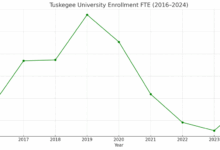Keep It Moving – Education Rickshaw

This series explores a rarely discussed strength of direct instruction: its power to motivate students. While critics often paint explicit teaching as boring or uninspiring, the truth is that its structure, pace, and design motivate kids better than any other system.
Momentum is fragile. Linger too long, and you’ll lose them.
Ask a question the students don’t know how to answer, and wait for them to “guess what’s in your head.” Let the silence stretch. Maybe one brave soul takes a stab. Maybe not. Now repeat that twenty times in a single lesson. What you’ve got isn’t curiosity – it’s collapse. It’s the “Anyone? Anyone?” scene from Ferris Bueller’s Day Off, brought to life.
This kind of slow pacing is everywhere. In staff meetings. In school assemblies. Even in some of the podcasts I record—where I just want to yell, “Pick it up already! We’re losing them!” Slowness is not neutral. It drains attention. And once attention goes, motivation follows.
Direct instruction refuses to indulge in slow-down. It’s built on the principle that the pace of the lesson is the pace of the learner’s attention. Anita Archer calls it “perky pace” and she lived it. Watch her teach, and the first thing you’ll notice is tempo. The lesson moves. No downtime. No drifting. The students are swept up in the rhythm.
This isn’t about rushing lessons, or becoming a dancing circus clown. It’s about tightness. Tasks are short. Transitions are snappy. The teacher cues, the students respond, the teacher affirms, and they’re onto the next thing. The teacher doesn’t waste time waiting for a few hands in the air. Everyone is involved, all the time. There’s no space to zone out.
And if an activity starts to lose steam? The direct instruction teacher moves on. When the energy peaks, they step off the wave. They kill it before it dies (KIBID).
I often observe teachers attempting to stretch tasks out, especially where the lesson revolves around a project or activity rather than clear instructional goals. Because the activity itself is the point, the teacher feels obligated to keep it going—even as attention fades, minds wander, and misbehavior creeps in. The teacher starts nagging more, reprimanding more—“Guys, guys, come on”—and everyone feels it. The teacher cannot “KIBID” because that would mean not allowing the kids to finish what they started.
The direct instruction teacher doesn’t make that mistake. Turn and talks end just as they are getting exciting. That Do Now or mini-whiteboard retrieval opportunity? Over in 5 minutes. The deliberate restraint keeps students feeling sharp and successful. It creates a rhythm of “we could’ve done more, but no time to waste.”
Direct Instruction (DI) programs are deliberately designed to support this rhythm. Instead of using a single-topic lesson format, they follow what is known as Track Design. Each lesson weaves together multiple strands—different mini-skills or concepts that are revisited and extended over time. This means students are never stuck on one thing for too long. The shifts between tracks not only give learners distributed practice across a range of skills, but also help keep things fresh and fast-paced.
In direct instruction classrooms, students come to expect a lesson that moves quickly and never outstays its welcome. That expectation becomes a motivator in itself.
So come prepared with a well-designed lesson plan (See Tavernetti’s book, Teach Fast), but don’t feel like you need to stretch and squeeze every drop out of each segment. Keep it tight. Keep it moving. Step off the wave before it crashes.
Because when the pacing is right, the students don’t just learn faster. They leave wanting more.
Discover more from Education Rickshaw
Subscribe to get the latest posts sent to your email.
Published by





